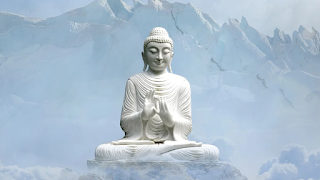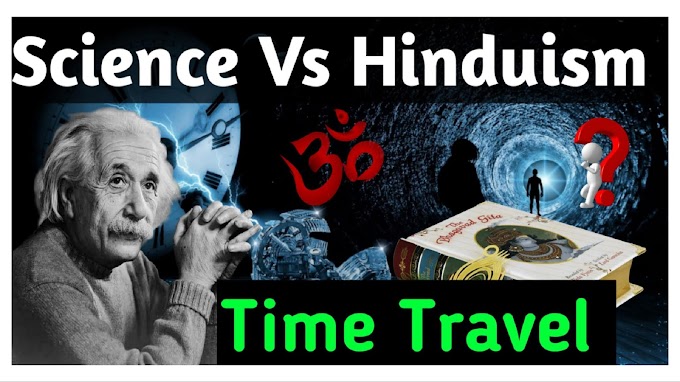From Buddhist perspective life is inseparably tied to Duḥkha which may be translated into English as suffering, even death does not bring an end to suffering as the life process does not stop with death. When life ends in one place with one body the mental Continuum the individual stream of Consciousness Springs up again elsewhere with a new body as its physical spot . Thus the cycle goes on over and over birth, aging and death driven by The Thirst for more existence this round of rebirths called Saṃsāra has been turning through the beginningless time. It is without a first point without temporal origin, no matter how far back in time we go we always find living beings ourselves in previous lives wandering from one state of existence to another's. Buddha described various Realms where rebirth can take place such as Realms of Torment the animal realm the human realm and Realms of celestial blessed but none of these Realms can offer a final Refuge.
Suffering is caused by Taṇhā that is craving whose Origins lie in our inclination towards certain unwholesome mental States known as the Kleshas that is defilements. The most basic defilements are the Triad of Lobha that is greed, Dosha that is imperfection and Moha that is delusion.
Lobha is self-centered desire. That is the desire for pleasure and possessions the drive for survival and the urge to bolster the sense of ego with bar status and Prestige.
Dosha signifies the response of negation expressed in rejection, irritation, condemnation, hatred and meet the anger and violence.
Moha means mental darkness that is the thick coat of insensitivity which blocks out clear understanding.
From these three Roots emerge the various other defilements Conceit, Jealousy, Ambition, Lethargy, Arrogance and the rest. And from all these defilements together the roots and the branches comes Duḥkha in its diverse forms as pain and sorrow as here and discontentment as the aimless drifting through the rounds of birth and death.
To gain freedom from Duḥkha therefore the defilements need to be eliminated, the Buddha teaches that route that holds all the defilements together is Avidyā that is ignorance. Ignorance is Not Mere absence of knowledge a lack of knowing particular pieces of information, It is Blindness to the real nature of things that shroud our minds. Ignorance can coexist with a vast accumulation of itemized knowledge and in its own way it can be tremendously screwed and resourceful, as the basic root of suffering ignorance is a fundamental Darkness surrounding the mind to free oneself from suffering fully and finally one must eliminate Ignorance by the root, since ignorance is a state of not knowing things as they really are. What is needed is knowledge of things as they really are that is not merely conceptual knowledge, knowledge as idea but perceptual knowledge as knowing which is also a theme, this kind of knowing is called Prajñā or Pragya that is wisdom, wisdom helps to correct the distorting work of ignorance. It enables us to grasp things as they are in reality directly and immediately free from the screen of ideas, views and assumptions one's mind ordinarily steps up between oneself and real, thus to eliminate ignorance one needs wisdom as indubitable knowledge of the ultimate nature of things wisdom cannot be gained by mere learning by gathering man accumulating and array of threat. However, wisdom can be cultivated through a set of conditions, conditions which we have the potential to cultivate, these conditions are actually mental factors components of Consciousness which fit together into a dramatic structure that can be called a path leading to the cessation of suffering.
The Buddhist doctrine of Duḥkha and its end is fully explained through the four noble truths. These four noble truths were put forward by the Buddha at Sarnath in his first public discourse known as the Dhammacakkappavattana Sutta that is discourse On the Turning of the wheel of the Dharma, these four noble truths are suffering, the original suffering, the cessation of suffering and the path leading to the cessation of suffering, this forth truths which is the path that leads to the cessation of suffering consists of eight parts, which are collectively known as the āryāṣṭāṅgamārga that is the Eightfold Path. The Eightfold Path is also known as Majjhima Patipada that is the middle path because it avoids the two extremes of self-mortification and self-indulgence. However, it is not a middle path in the sense that it effects a compromise between the extremes, but it transcends them both by avoiding the errors that each involved. The path avoids the extreme of sense Indulgence by its recognition of the futility of desire and it's stress on renunciation, the desire and sensuality far from being means to happiness our Springs of suffering to be abandoned as we requisite of Deliverance, but the practice of renunciation does not entail the tominting of the body, it consists in mental training and for this the body must be fit a sturdy spot for the inward work, thus the body is to be looked after well kept in good health while the mental faculties are trained to generate the liberating wisdom.
The eight limbs of the Eightfold Path are Samma Ditthi that is Right View, Samma Sankappo that is right intention, Samma Vacha that is right speech, Samma Kammo that is right action, Samma Ajivo that is right livelihood, Samma Vayamo that is right effort, Samma Sati that is right mindfulness and Samma Samdhi that is right concentration.
These eight limbs are not sequential as each one of them is dependent upon the other and all of them are meant to be followed and practiced together. Enlightenment can be attained only when all the eight limbs are fully practiced and perfected, the eight limbs of the path cover a man's understanding of the truth is moral life and his power of concentration and that is by Prajna, śīla and Samadhi viewed from this triple aspect understanding of the truth consists of Right View and right intention, moral conduct consists of right speech, right action, right livelihood and power of concentration consists of right efforts, right mindfulness and right concentration. Right View may be explained as a clear understanding of the Four Noble Truths, right intention means directing one's efforts towards the elimination of ignorance through the removal of Malevolent thoughts and the development of pure thoughts by practicing the Nekkhamma that is giving up selfishness and worldly pleasures of the Appl that is altruism and loving-kindness and of Ahimsa, that is harmlessness. The meaning of right speech is refraining from telling lies, not engaging in Gossip, not slandering others are refraining from the use of harsh words, right action consists of abstinence from causing injury to living beings, stealing and sexual misconduct, a person who observes right livelihood does not earn his livelihood by taking up a job or career in a field in which harm gets caused to living beings.
The meaning of right effort is to generate in oneself and then sustain positive mental attitudes such as the seven factors of Enlightenment, which are mindfulness investigation of phenomena, energy, Rapture Tranquility, concentration and Equanimity. The meaning of right mindfulness is the cultivation of awareness of one's body, feelings, mind and mental object. Right concentration is accompanied by meditative practices of Samma Samadhi enabling the practitioner to cultivate one pointedness of the mind. This is done through the shutting of the doors of the senses to the outside world and thereby focusing on one of an assortment of objects that are designed to enable the practitioner to accomplish specific mental state that fall outside a person's normal day-to-day consciousness.









0 Comments